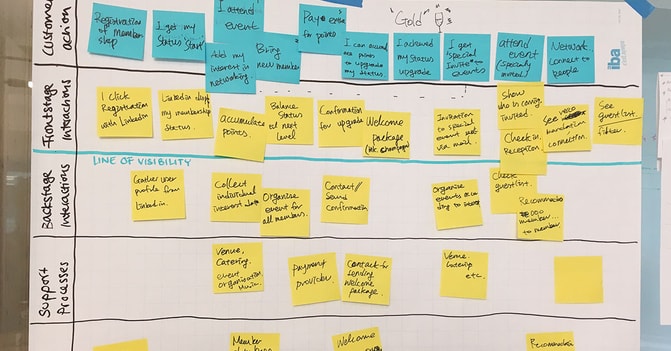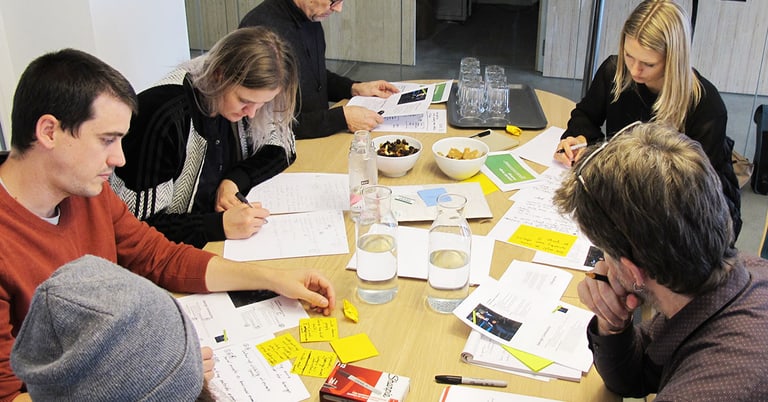Forget your fancy new product idea.
Talking about improving customer satisfaction, companies often describe the fancy new product they are about to design. The one that is meant to boost customer satisfaction and sales rates like a miracle. But: Is the lack of this new product really the source of unhappy customers?
The biggest obstacles for customer friendliness are (internal) processes.
As a Service Designer at Liip, I do a lot of user research in my projects to find out what makes customers unhappy and how we can solve this. And in most of the cases, I encounter difficult, complicated or nontransparent processes as the biggest pain points. Customers feel, that they have to make too much effort to get the problem solved. Often it doesn’t seem to be clear what to do next. Or they are redirected many times and have to tell the same story over and over again.
These problems typically result from (internal) processes that don’t suit the customers' and employees' needs. And in the meantime they seem to have a big impact on customer satisfaction and the way a customer talks about a company.
Internal processes often seem complex and difficult to change.
In my projects, I experience that many people often don’t dare to touch these processes, although they realise something is not working well. Why? Typically, the problems have many different causes. So a variety of processes and systems are affected and they can’t be assigned to just one department or one person’s responsibility. So who should take care of them? Who feels responsible to change something? This threatens to end up expensive and complicated. Sounds a bit like Pandora’s box, right?
But also the cost of doing nothing is high.
People often forget that doing nothing also is expensive and complicated too. Unhappy customers who spread bad word of mouth or don’t buy again can have a big impact on a company’s revenues. Also, handling customer enquiries costs a lot of money, especially when internal processes to handle them are complicated too. And last but not least - the impact of unhappy employees on a company’s performance is not to be underestimated.
Align the customer experience with what happens behind the scenes.

But how to get there? And how to not get lost in complexity, especially when the service touches many different processes, systems and departments? Service Design provides us a lot of useful answers to these questions.
How to design user friendly and efficient services - 9 steps
- Have a clear mission:
At the beginning of every project, I work on creating a clear mission and a common understanding of where to go together with the team - like a lighthouse that helps to keep orientation on the way. - Understand the problem in all its aspects before working on the solution:
In my opinion, the most important part of creating useful new services is to have a clear and overall understanding of where exactly the issues are - from the user’s needs to the company’s goals and problems. And very important: based on data, not assumptions. - Start with the user’s needs, not what tools allow you.
- Focus in Ideation:
It requires some discipline to not ideate on whatever seems to be cool. But clearly focusing on solving exactly the problems the team encountered is crucial to not get lost in complexity. - Prototype ideas already at early stages:
The clear common understanding of what the idea consists of is extremely valuable. - Test continuously:
The more feedback we get, the better. It helps to discover if we are on the right or wrong way at an early stage. - Implement step by step:
Implementing one idea after the other helps to get things done and not get lost in too many measures we can’t cope with. Improving services is often about continuously implementing a bunch of measures in order to fulfill one big longterm mission. Agile methods as Scrum perfectly support this way of working during implementation. - Think big. But start small:
Sometimes also small changes are promising. - Evolve:
Projects are never done with the GoLive. They just enter a new phase: the one where our work gets really tested by the mass of users. Every new learning helps us to continuously improve the service.
What are your experiences with designing better services and processes? What was hard, what worked well? Let me know by leaving a comment.

